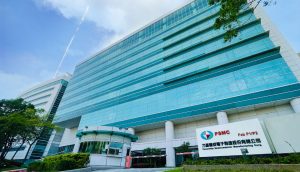Popular Keywords
- About Us
-
Research Report
Research Directory
Semiconductors
LED
Consumer Electronics
Emerging Technologies
- Selected Topics
- Membership
- Price Trends
- Press Center
- News
- Events
- Contact Us
News

As reported by Taiwanese media, there's a gradual uptick in TSMC's capacity utilization lately, accompanied by a noticeable surge in orders from TSMC's clients. Some segments of the market are showing signs of rekindled demand, hinting at a possible upswing in the semiconductor industry. Nevertheles...
News

As reported by Nikkei Asia on October 23rd, three inside sources have indicated that Vanguard International Semiconductor(VIS), a prominent semiconductor foundry, is gearing up to construct its first 12-inch wafer plant in Singapore, aiming to meet the surging demand for automotive chips. It's im...
Press Releases

TrendForce reports that from 2023 to 2027, the global ratio of mature (>28nm) to advanced (<16nm) processes is projected to hover around 7:3. Propelled by policies and incentives promoting local production and domestic IC development, China’s mature process capacity is anticipated to grow f...
News

According to UDN News, Taiwan's semiconductor foundry, Powerchip Semiconductor Manufacturing Corporation (PSMC), is planning to establish a 12-inch wafer plant in Japan, with Mie Prefecture emerging as a probable location. This facility will be part of a burgeoning semiconductor hub that links up wi...
Press Releases

TrendForce research indicates that in 1H23, the utilization rate of 8-inch production capacity primarily benefited from sporadic inventory restocking orders for Driver ICs in the second quarter. Additionally, wafer foundries initiated pricing strategies to encourage clients into early orders, offer...